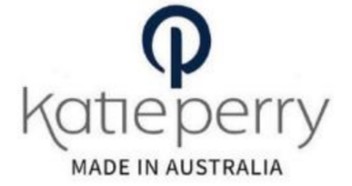Sydney fashion designer Katie Taylor (born Katie Perry) has won a “David and Goliath” trade mark battle against US pop singer Katheryn Hudson (more commonly known as Katy Perry).
The recent Federal Court of Australia judgment of the Honourable Justice Brigitte Markovic (Perry case) begins with the instantly iconic sentence, “This is a tale of two women, two teenage dreams and one name.”1
Katie Perry Mark
Taylor began selling her line of clothing in 2007 and on 29 September 2008, filed the trade mark “Katie Perry” for use in trade mark class 25 in respect of “clothes” (Katie Perry Mark).2 The Katie Perry Mark passed the examination stage on 18 December 2008, and IP Australia advised Taylor that the next step was advertising so that other people had the opportunity to oppose the registration.3
Opposition
In May 2009 Hudson’s legal representatives sent Taylor a letter requiring her to withdraw her application and immediately cease the sale and advertisement of clothes bearing the Katie Perry Mark. This was on the basis that it was substantially identical or deceptively similar to “Katy Perry”. However, several months later Hudson withdrew this opposition, allowing the Katie Perry Mark to be registered on 21 July 2009 and granting Taylor the right to exclusive use of the Katie Perry Mark for clothing in Australia.


Katy Perry Mark
Following this, through her company Killer Queen, Hudson applied for the trade mark “Katy Perry” for use in classes 9 (music, CDs and other goods), 25 and 41 (entertainment and other services). In September 2009 IP Australia informed Hudson that:
Hudson’s application was subsequently amended by removing class 25. This was then accepted and registered on 7 November 2011 (Katy Perry Mark).
Alleged Impugned Conduct
In 2014 and 2018, in anticipation of the Australian legs of her “Prismatic World Tour” and “Witness Tour”, Hudson promoted Katy Perry-branded merchandise (including clothing) on social media. These products were sold in Australia through retailers, websites and at concerts, in 2014 via tour merchandise company Bravado (by way of a detailed written agreement with another of Hudson’s companies, Kitty Purry, as licensee of the Katy Perry Mark)5 and in 2018 via tour merchandise company Blackout Merch (by way of a less formal series of written correspondence).6
Taylor claimed, firstly, that Killer Queen, Hudson and Kitty Purry were joint tortfeasors in the claim for trade mark infringement. It was not disputed that Bravado had infringed the Katie Perry Mark at the relevant time. Taylor also claimed that similar infringements had occurred in 2018 with the respondents and Blackout Merch.
Decision
On 21 April 2023 Justice Markovic ruled in favour of Taylor, finding that Hudson’s company Kitty Purry was liable (jointly with Bravado) for advertising, offering for sale and selling clothes bearing the Katy Perry Mark. Her Honour also found that Hudson had infringed the Katie Perry Mark on various occasions by promoting certain merchandise on Twitter and Facebook.
Hudson and her companies were unable to establish that they believed they had an arguable defence at the relevant times. Hudson did not give evidence, the respondents’ sole witness gave no evidence on this issue and a claim of legal professional privilege was upheld over documents that may have been relevant to establishing this assertion.7
Despite her infringement, Hudson was not ordered to pay Taylor any compensation. Further orders in respect of the quantification of damages to be paid by Kitty Purry, as joint tortfeasor with Bravado, and the question of costs are to be determined at a subsequent hearing.
What is a trade mark?
A trade mark legally protects your brand by giving you exclusive use of that mark in Australia. Trade marks can be registered to protect a logo, phrase, word, colour, picture or aspect of branding. This is helpful for assisting customers to distinguish your brand, product, service or event from competitors in the market.
When applying for a trade mark you must specify the goods and/or services you will be using it for by reference to one of the 45 classes. As seen in the Perry case, it is important to note that this will determine the scope of your trade mark’s protection. The heading of each class describes the type of goods or services covered by that class. Choosing the correct class or classes is vital as new goods or services cannot be added once the application is submitted.
The application process for a trade mark takes a minimum of seven months. This includes a period of three to four months for your application to be examined and a further period of two months when your trade mark is published. During this period, anyone can oppose your trade mark and if this occurs, you will need to successfully overturn any oppositions. However, once secured, a trade mark can last up to ten years before it needs to be renewed.
Advantages of registering trade marks
Provides clear remedy pathway
The Perry case embodies the purpose of a trade mark, which is to protect the registered owner with the right to exclusive use of their trade mark in the registered class or classes. Having the right to exclusive use ensures that irrespective of the status or perceived power of the unauthorised user you will always have the right to sue to protect your trade mark. Although brands who feel they have had their Intellectual Property (IP) breached have other remedies available (including misleading and deceptive conduct or passing off claims), these arguments are more complex and the results are uncertain.
Protecting brand reputation
In the Perry case, Taylor considered that her label being Australian owned and 100% made in Australia was a significant aspect of the brand’s identity and one of her biggest marketing points. Having her Australian brand associated with Hudson (an American singer) was not what she wanted and she did not consider it positive for her business.8 Having the right to exclusive use also allows a brand to deal with unauthorised users which can prevent the public from falsely assuming the unauthorised user is related to or somehow endorsed by the legitimate IP holder.
Lavan Comment
Registering a trade mark for your brand (or event) is the most effective way to protect the value and integrity of your brand, as it ensures any unauthorised use of IP can be dealt with promptly.
Seeking legal advice to assist with this process at an earlier stage can save time and money by minimising the risk of having the application denied and ensuring the registered trade mark provides adequate protection. The appropriate advice can also ensure that any proceedings to protect your trade mark are promptly commenced.
The Litigation and Dispute Resolution team at Lavan has extensive experience in respect of trade mark registrations. If you require advice in this area, please contact Senior Associate, Ms Stephanie Tan and Partner, Mr Iain Freeman to discuss the matter.
1 Taylor v Killer Queen, LLC (No 5) [2023] FCA 364, [1].
2 Ibid, [107].
3 Ibid, [109].
4 Ibid, [194].
5 Ibid, [204].
6 Ibid, [237].
7 Ibid, [849].
8 Ibid, [135].

